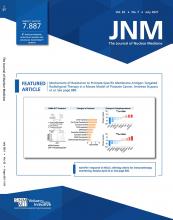REPLY: In line with the comments by Bravi et al. on our article (1), prostate-specific membrane antigen (PSMA) PET demonstrated low sensitivity but high specificity and negative predictive value for the detection of pelvic nodal metastases, compared with histopathology, in a multicenter prospective phase III imaging study using blinded independent central reads (2). PSMA PET detection inversely correlates with the size of tumor deposits, and thus PET is prone to missing micrometastatic disease (3). Despite underestimation on a single-lesion level (4), PSMA PET positivity raises a red flag for diseased regions (1). Because nodal spread follows lymph drainage anatomy, PSMA PET guidance toward regions at risk seems feasible. The ongoing prospective ProsTone trial (NCT04271579) will assess whether unilateral pelvic lymph node dissection on the PSMA PET–positive side will lead to an improved trade-off between efficacy and toxicity by sparing potentially nondiseased contralateral nodal regions. We agree with Bravi and colleagues that suggesting the adoption of an adequate template will be key to maximizing the benefit for patients undergoing local salvage therapy. In addition, standardized reporting of PSMA PET using a rational anatomic framework together with implementation into clinical trials on local therapy will be key to defining the future role of PSMA PET in treatment guidance (5).
- © 2021 by the Society of Nuclear Medicine and Molecular Imaging.







